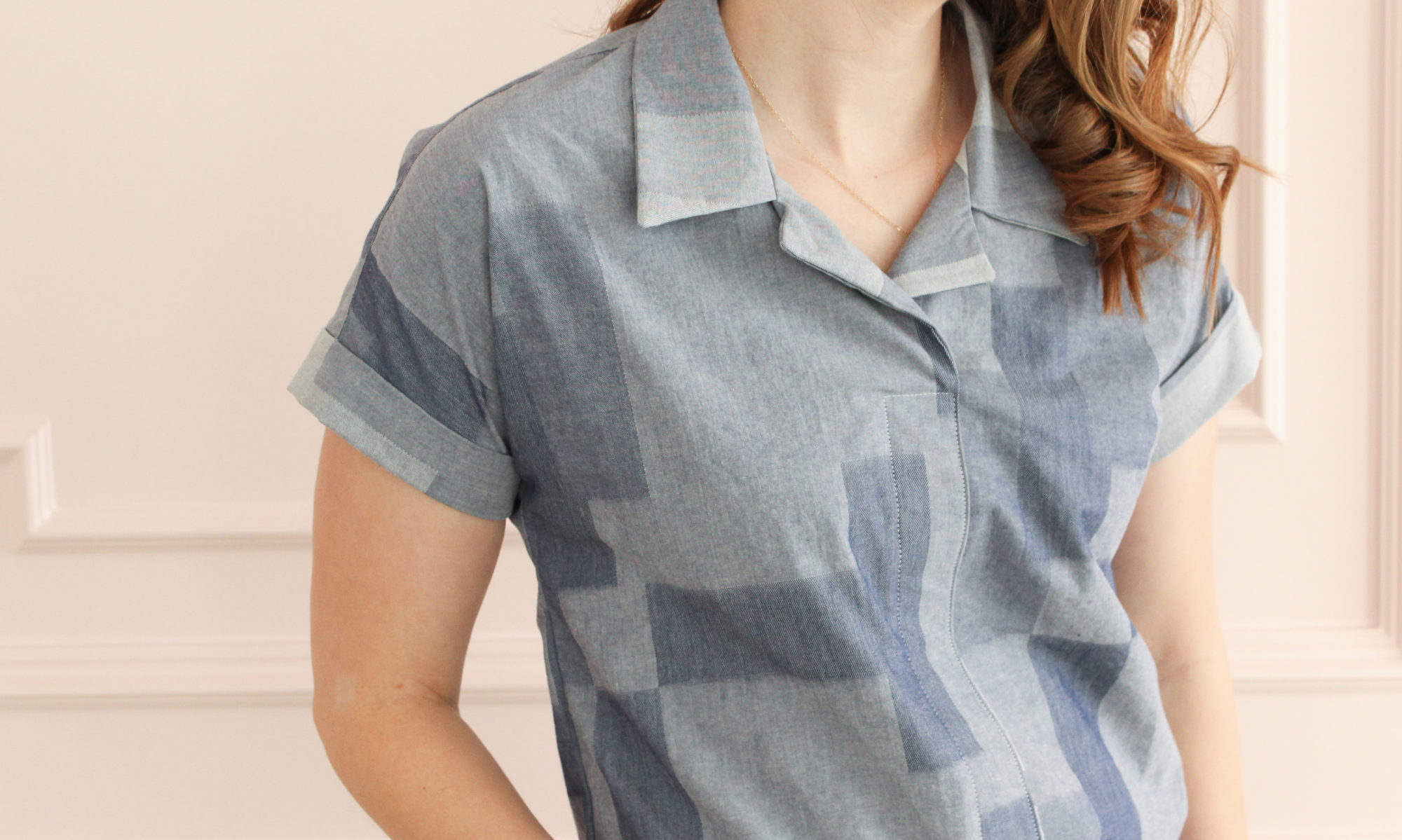Hello! Today I’m thankful that I can finally show you my test version of the newest True Bias pattern, the Salida Skirt. The hardest part about pattern testing is always waiting to share my finished make. This skirt is no exception. The Salida includes two views. View A is fitted to the knee and View B is fitted through the hips and mid-calf length. During the test, I made View A, but have been dreaming of View B ever since.

If you’ve read my Justine skirt post, you may remember that I actually don’t own or wear many skirts. When I found out Kelli’s newest pattern would be a skirt, I was initially hesitant. I did, however, decide to take a leap of faith and I’m exceptionally glad I did. The line drawings really sold me on this pattern. It’s hard to photograph and see in black, but the style lines on this pattern are ace. The front and back both include a v-shaped yoke with center and side panels. Coupled those with slash pockets that are a surprisingly decent size and you’ve got a winning combination.

Let’s take a quick minute to talk about this fabric. I used a Black Micro Wale Corduroy from Style Maker Fabrics. When I purchased this fabric last January, I planned to use it for a Lander Pant overall hack that never came to fruition. I cut everything out and then lost steam. Thankfully, the paneling of this skirt makes it easy to cut out of scraps and odd shaped pieces of fabric. It feels fitting that although this corduroy didn’t become a pair of Lander Pants, it found a way to become another True Bias pattern. The softness and structure of the corduroy turned out to be just what this skirt needs. In fact, I think Kelli used the same fabric in a different color for one of the pattern cover samples.

Over the last few years, I’ve grown to love top stitching seams which made sewing this skirt all the more enjoyable. The panels and yoke seams are all top stitched; a detail I wish showed up better in this version. Despite the decent amount of top stitching, the Salida came together rather quickly. I sewed it up over the course of 2 or 3 evenings without having to pull any crazy late nights. The zipper insertion is the only area where I made a mistake (zip fly is on the wrong side), but even that wasn’t noticeable or really simple to change so I decided to call it a “design choice.”

Let’s move on to discussing fit. My waist and hip measurements put me right in between a size 10 and 12 on the size chart. Based on this, I made the decision to cut a size 12 and adjust from there. After basting the front and back skirt pieces together, I ended up removing about 3/8″ from each of the outer side seams. This is an adjustment likely due to the fact that I was between sizes, not an issue with the pattern sizing. The only other adjustment I made was to add 3″ to the length above where the back slit begins. In retrospect, I probably only needed to add 2″, I was just nervous about the slit beginning right below my bottom (perils of sewing tall). With those simple adjustments, the fit is pretty close to perfect.

After not wearing them for so long, I’m still getting used to styling a skirt. Luckily I think I found the perfect formula in pairing this corduroy Salida Skirt with a favorite striped Lark Tee, the ever-versatile Hampton Jean Jacket , and a pair of booties. Now I just need to find a good pair of tights and I’ll be set for the cold months ahead. Wearing my skirt styled this way gives me hope that I may once again add skirts to my regular wardrobe rotation.

Thanks for reading!
Want to see more of my True Bias Patterns makes? Check out my Lander Pant, Roscoe Blouse, or Yari Jumpsuit posts.




















